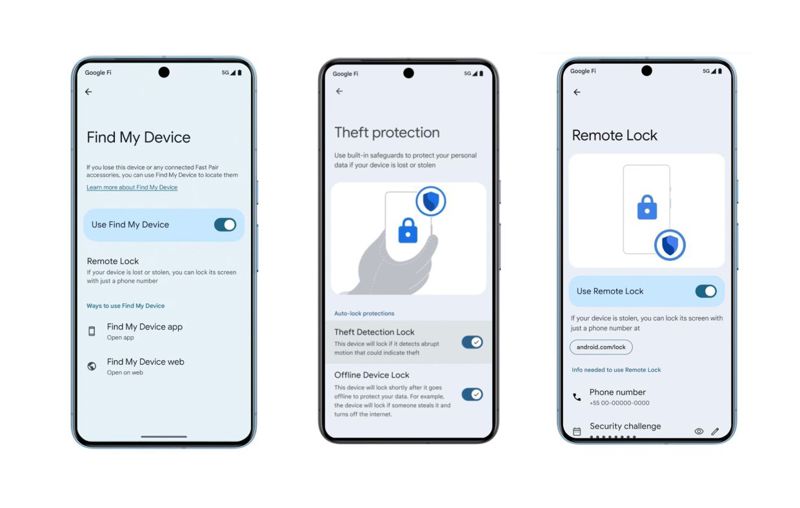
In an era where smartphones are integral to our daily lives, the security of these devices has become paramount. As the prevalence of smartphone theft continues to pose a significant concern, tech giants like Google and Apple are taking robust measures to enhance the security of their devices. This article explores the latest advancements and strategies that Google and Apple are employing to protect smartphones against theft in 2024.
Enhanced Security Features by Google
- Advanced Device Tracking
Google has significantly improved its Find My Device feature, which now offers more precise location tracking. Utilizing a combination of GPS, Wi-Fi, and cellular networks, the feature allows users to pinpoint the exact location of their lost or stolen device. Additionally, Google has introduced crowd-sourced location data, enabling other Android devices to help locate a missing phone.
- Secure Lock Screen
Google's secure lock screen functionality has been enhanced with more sophisticated biometrics, including facial recognition and fingerprint scanning. These features make it extremely difficult for thieves to bypass the lock screen. Moreover, the lock screen now supports customized messages, allowing owners to display contact information for potential good Samaritans who might find their device.
- Remote Data Wipe
To ensure sensitive information doesn't fall into the wrong hands, Google has upgraded its remote data wipe feature. Users can now remotely erase all data on their device through their Google account. This feature has been made faster and more reliable, ensuring that even if the device is offline, the wipe command will be executed once the device is back online.
Apple's Cutting-Edge Security Measures
- Find My Network Expansion
Apple's Find My network has been expanded to include a broader range of devices and accessories. Leveraging the vast network of Apple devices worldwide, the Find My feature can now locate lost or stolen iPhones with greater accuracy. The introduction of AirTags has also made it easier to track personal belongings attached to these tiny devices.
- Activation Lock
Activation Lock is a critical deterrent against theft, making stolen iPhones unusable without the owner's Apple ID and password. This feature has been fortified with new layers of security, including automatic activation upon device setup. This ensures that even if a thief attempts to reset the device, they will be unable to bypass the lock without the original credentials.
- Improved Encryption
Apple has always prioritized user privacy, and in 2024, it has taken encryption to the next level. All data on the iPhone is encrypted by default, including messages, photos, and app data. This makes it nearly impossible for unauthorized users to access any information on the device, even if they manage to bypass the lock screen.
Common Strategies for Both Giants
- Two-Factor Authentication (2FA)
Both Google and Apple emphasize the importance of two-factor authentication (2FA). By requiring a secondary form of verification, such as a text message or authentication app code, 2FA adds an additional layer of security, making it harder for thieves to gain access to user accounts.
- Regular Security Updates
Continuous security updates are crucial for protecting against new threats. Both companies regularly release updates to patch vulnerabilities and improve the overall security of their devices. Users are encouraged to keep their devices up to date to benefit from the latest protections.
- Education and Awareness
Google and Apple are also investing in user education, helping customers understand the importance of security features and how to use them effectively. Through tutorials, notifications, and customer support, both companies strive to raise awareness about the best practices for keeping devices secure.
Conclusion
As smartphone theft remains a pressing issue, Google and Apple are at the forefront of developing innovative solutions to protect users. By enhancing tracking capabilities, fortifying device encryption, and promoting user awareness, these tech giants are making significant strides in ensuring the security of their devices. Staying informed about these advancements and utilizing the available security features can help users safeguard their smartphones against theft and unauthorized access.
For more detailed insights into these security measures, visit here.
